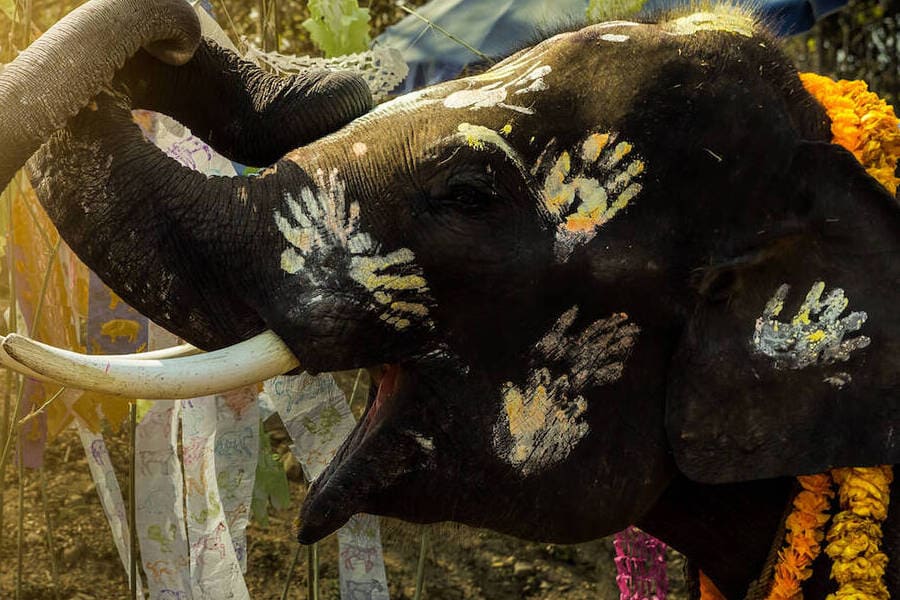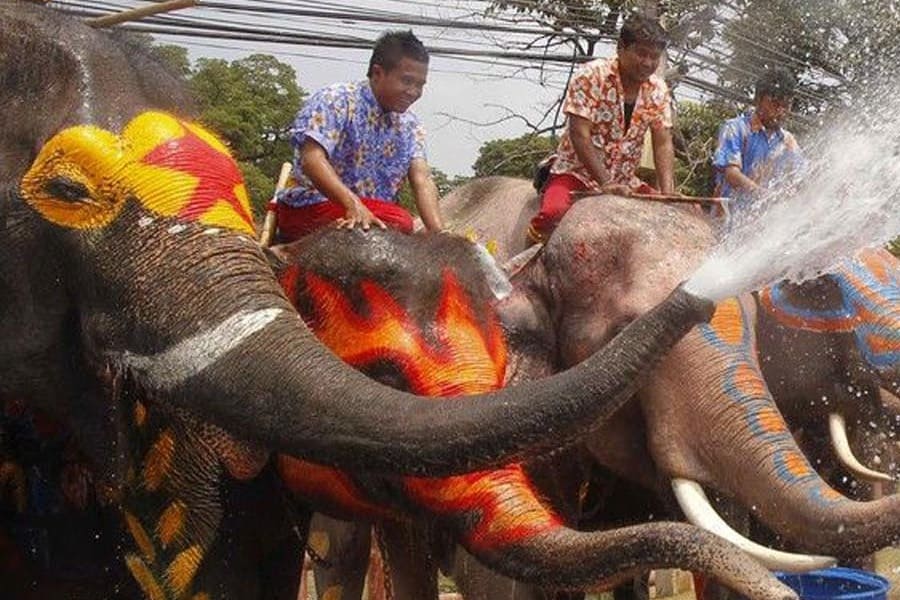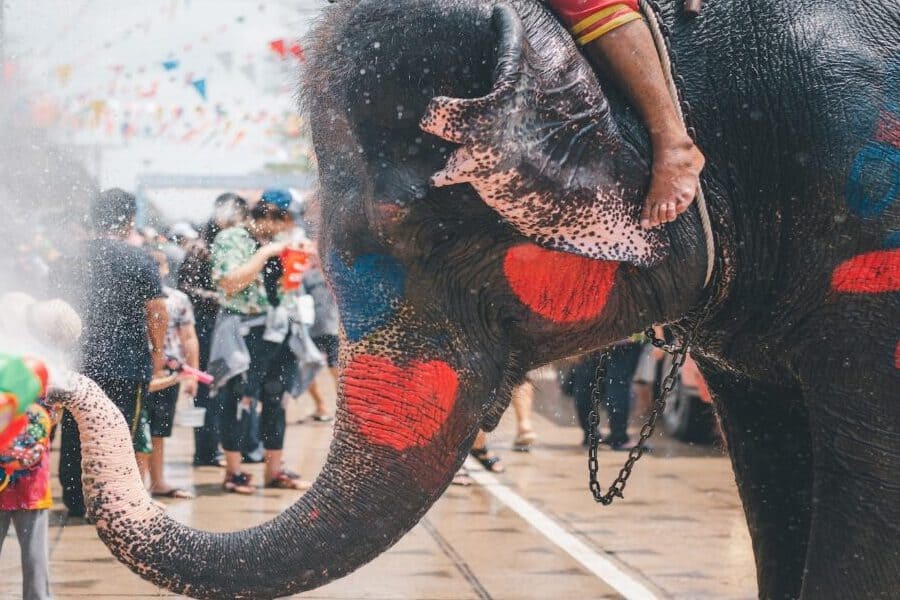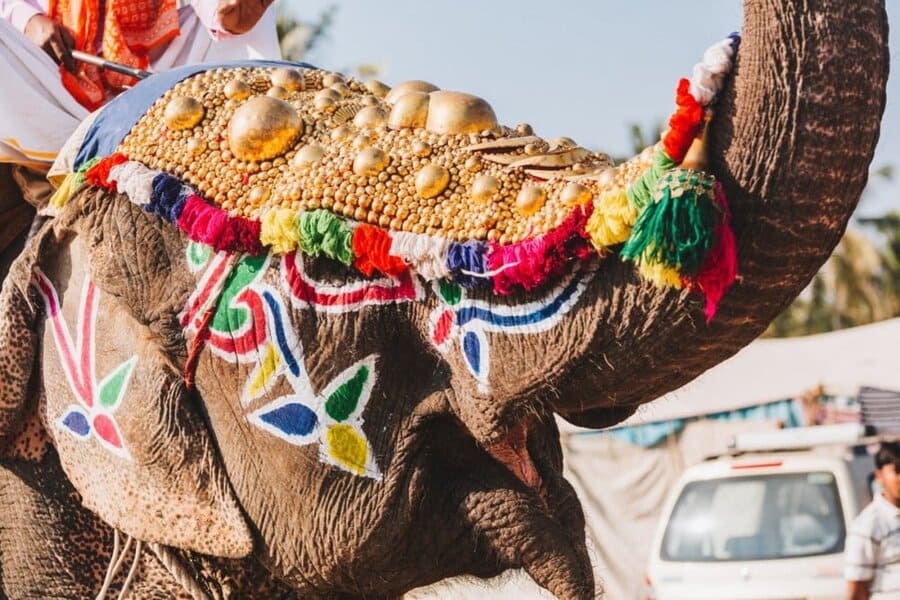Embark on a fascinating journey through Cambodian culture and history as we explore the pivotal role of elephants. Join us on this enlightening cambodia trip as we delve into the deep-rooted significance of these majestic creatures in Khmer traditions, from ancient times to the present day. Discover how elephants have shaped Cambodian culture, serving as symbols of power, strength, and spiritual significance.
Contents
Historical Relationship between Elephants and the Khmer Empire
The historical relationship between elephants and the Khmer Empire of Cambodia was deeply intertwined, symbolizing both power and prestige.
Elephants played a pivotal role in the empire's military endeavors, serving as formidable assets in warfare due to their strength, agility, and imposing presence. Khmer rulers strategically employed elephants in battle, utilizing their prowess to intimidate adversaries and bolster the empire's military might.
Beyond the battlefield, elephants were also revered symbols of royal authority, featured prominently in grand processions, ceremonies, and religious rituals.
As revered creatures associated with the divine, elephants symbolized the Khmer monarch's divine right to rule and were celebrated as manifestations of cosmic power and earthly sovereignty within the empire's cultural fabric.
The Role of Elephants in Cambodian Culture
Religious beliefs
In Cambodian culture, elephants hold profound significance within religious beliefs, often revered as sacred beings embodying qualities of strength, wisdom, and spirituality. In both Buddhism and Hinduism, which have deeply influenced Cambodian religious traditions, elephants are revered for their symbolic associations with important deities and spiritual concepts. In Buddhism, the white elephant is considered a symbol of purity and is associated with the birth of Siddhartha Gautama, the historical Buddha. Similarly, in Hinduism, the elephant-headed deity Ganesha, known as the remover of obstacles, is widely worshiped across Cambodia, symbolizing auspicious beginnings and prosperity.
Religious art, temple carvings, and ceremonies
Moreover, elephants feature prominently in Cambodian religious art, temple carvings, and ceremonies, serving as powerful motifs that enrich the cultural landscape. Elaborate carvings of elephants adorn the walls of ancient temples such as Angkor Wat and Bayon, showcasing their integral role in Khmer religious iconography. These majestic creatures are depicted in various poses, often accompanied by deities or engaged in symbolic activities, reflecting their significance in the divine realm.
During religious ceremonies and festivals, elephants play a central role in Cambodian rituals, where they are honored and adorned with colorful garlands and ceremonial attire. These sacred animals partake in processions and offerings, symbolizing the harmonious connection between humanity and the divine. Through their presence in religious beliefs, art, and ceremonies, elephants continue to exert a profound influence on Cambodian culture, serving as timeless symbols of spiritual reverence and cultural heritage.
Festivals, Celebrations, or Cultural events in Cambodia where Elephants are Featured
In Cambodia, several festivals, celebrations, and cultural events prominently feature elephants, showcasing their enduring significance within the nation's cultural heritage. One notable event is the Royal Plowing Ceremony, known as "Bon Chroat Preah Nongkoal" in Khmer, which takes place annually in Phnom Penh. During this ancient ritual, which marks the beginning of the rice-growing season, royal oxen and elephants are paraded through the streets as part of an elaborate ceremony presided over by Cambodian dignitaries and Buddhist monks. The elephants play a symbolic role in blessing the agricultural harvest and ensuring prosperity for the coming year.
Another significant cultural event is the Elephant Parade in Sen Monorom, Mondulkiri province. Held to celebrate Cambodia's majestic elephants and raise awareness about their conservation, this colorful parade features decorated elephants marching through the streets alongside dancers, musicians, and local communities. The event serves as a platform to highlight the importance of protecting Cambodia's endangered elephant population and preserving their natural habitats.
Additionally, Cambodia's Water Festival, known as "Bon Om Touk," is a major annual celebration held in Phnom Penh and other riverside towns. While the primary focus of the festival is on boat races and aquatic competitions, elephants often participate in parades and processions along the riverbanks, adding to the festive atmosphere and cultural vibrancy of the event.
These festivals, celebrations, and cultural events provide valuable opportunities for Cambodians and visitors alike to witness the majestic presence of elephants and to appreciate their integral role in Cambodia's cultural heritage. Moreover, they serve as platforms for promoting conservation efforts and raising awareness about the importance of preserving these magnificent animals for future generations.
Challenges facing Elephants in Cambodia today
Elephants in Cambodia face numerous challenges today, primarily stemming from habitat loss, human-elephant conflict, and poaching.
Habitat Loss:
Rapid deforestation and land conversion for agriculture, infrastructure development, and urbanization have led to the loss and fragmentation of elephant habitats in Cambodia. This loss of natural habitat restricts elephants' access to food, water, and migration routes, increasing their vulnerability to threats.
Human-Elephant Conflict:
As human populations expand and encroach upon elephant habitats, incidents of human-elephant conflict escalate. Elephants often raid crops, leading to conflicts with farmers who rely on their agricultural produce for livelihoods. These conflicts result in retaliatory killings of elephants, exacerbating the already precarious situation for the species.
Poaching:
Although Cambodia's elephant population is relatively small compared to other countries in the region, it remains at risk from poaching for their ivory tusks and other body parts. Despite international bans on ivory trade, demand persists, driving poaching activities and posing a significant threat to elephant populations.
Illegal Wildlife Trade:
Elephants in Cambodia are also vulnerable to being captured and trafficked for the illegal wildlife trade. This trade not only threatens individual elephants but also undermines conservation efforts aimed at protecting the species and their habitats.
Lack of Conservation Measures:
Limited resources and inadequate enforcement of wildlife protection laws contribute to the challenges facing elephant conservation in Cambodia. Conservation efforts are often hampered by insufficient funding, capacity, and political will, hindering effective measures to safeguard elephant populations and their habitats.
The significance of elephants in Cambodian culture and history is profound and enduring. From their revered status as symbols of power and strength to their integral role in various aspects of Khmer traditions, elephants have left an indelible mark on Cambodian society. As we reflect on their historical contributions and cultural significance, it becomes evident that elephants are more than just animals—they are revered beings deeply intertwined with the fabric of Cambodian identity.





